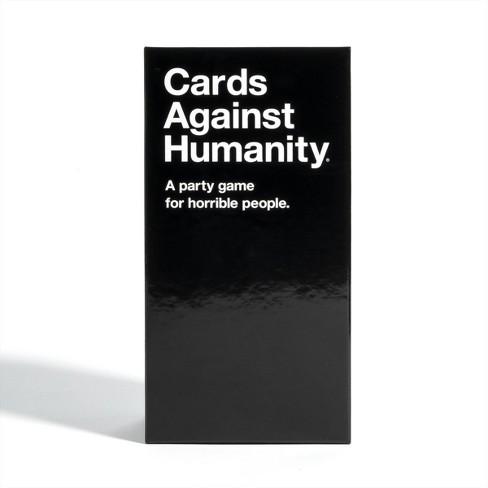Introduction
In developing our game concept, which combines character-driven debate with hot takes on unconventional topics, I’ve chosen to compare our approach with that of Cards Against Humanity – a popular party game focused on humor and controversial topics. This analysis will examine how “Cards Against Humanity” informs potential design choices and strategies for our game.
Cards Against Humanity is a physical card game that targets adults due to its mature content and sense of humor. It was created by a group of Highland Park High School alumni in their mid-twenties.
Our game concept and Cards Against Humanity share a baseline similarity in their reliance on humor and social interaction but differ in structure and thematic engagement. Our game introduces a character-based element that requires players to argue a position based on their character’s specific traits and backgrounds, adding a layer of role-playing that Cards Against Humanity lacks. While Cards Against Humanity yields a dynamic that’s both easy to play and highly entertaining, I’m skeptical that our game will require more work and creativity from the players to be highly entertaining.
Comparison of Mechanics
In Cards Against Humanity, players draw cards with phrases or words to complete sentences in the funniest way possible. In contrast, our game involves drawing cards to debate hot takes using characters with predefined traits, demanding more creativity and improvisation from players.
Our game encourages players to assume the roles of their characters, which could engage players who enjoy storytelling and character development, distinguishing it from the straightforward card-matching mechanics of Cards Against Humanity. Simultaneously, it’s possible that our game will demand too much creativity and feel like “work” to the players.

Analysis
I have very few critiques for Cards Against Humanity since I had an excellent time playing it. If I had to choose one way to improve it, I would try to find a way to make the game more exciting and interesting, perhaps by adding some sort of wild card or a physical component to the game. While I didn’t play for that long, I would imagine that after playing for an extended period of time, the game would get boring. One thing Cards Against Humanity does really well though is create a breeding ground for the players to create spicy dynamics, which is an element that we would like to emulate in our debate game. Examples of this dynamic at play were the moments where players connected over shared humor or controversial choices, highlighting the game’s success in engaging its audience through social interactions and shared cultural references.
Incorporating characters like Walter White, who must use specific phrases like “I am the danger,” introduces a storytelling aspect that Cards Against Humanity does not provide. The debate format over hot takes such as “Is water wet?” or “Is cereal a soup?” encourages not just humor, but also argumentative skills, making it engaging on an intellectual level as well. This introduces a different and potentially spicier dynamic because players will directly engage and intellectually battle one another. Furthermore, their very own friend must choose a winner and a loser!
Conclusion
While “Cards Against Humanity” sets a precedent for adult card games that blend humor with social interaction, our game introduces a new twist by combining these elements with role-playing and debate. This potentially broadens the appeal to those who enjoy more structured and creative play. This analysis suggests that our game could offer a fresh experience, appealing to both fans of traditional card games and those seeking a more creative and intellectual challenge.



